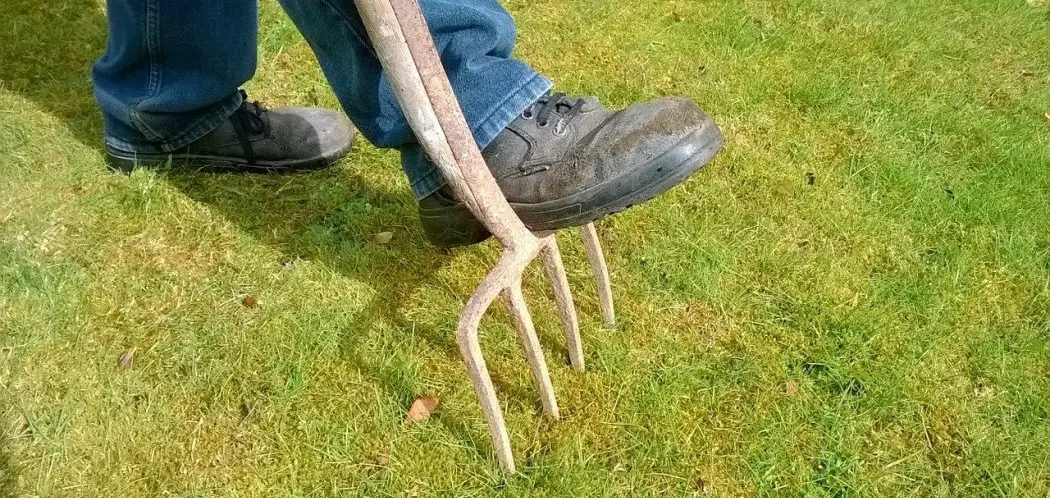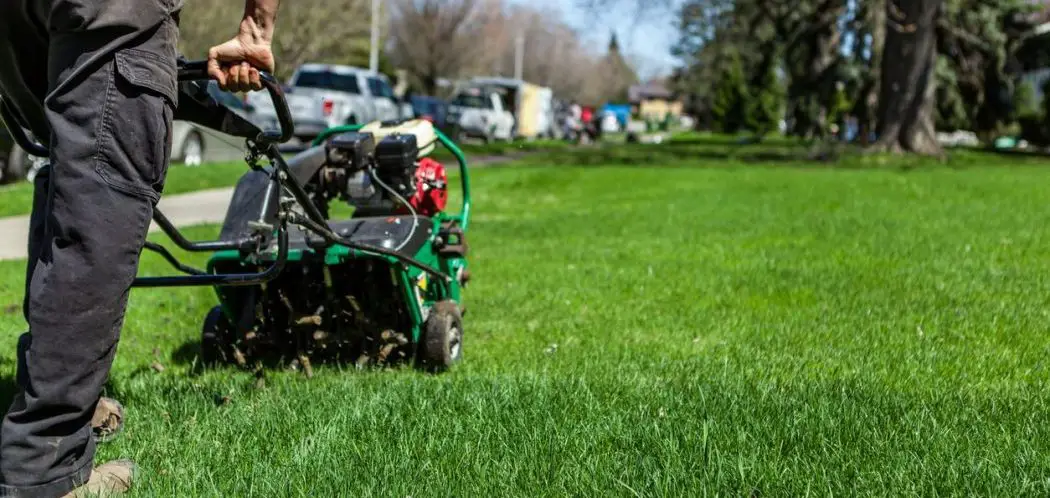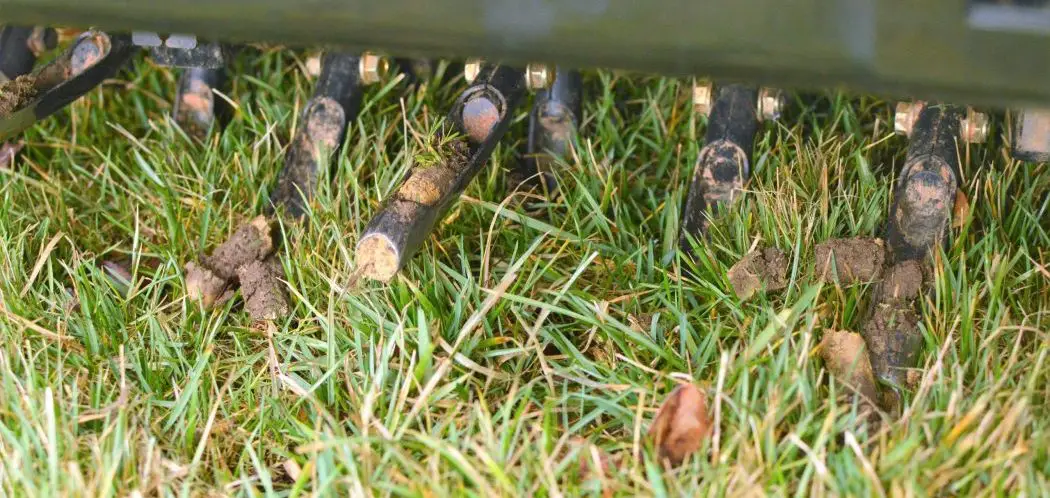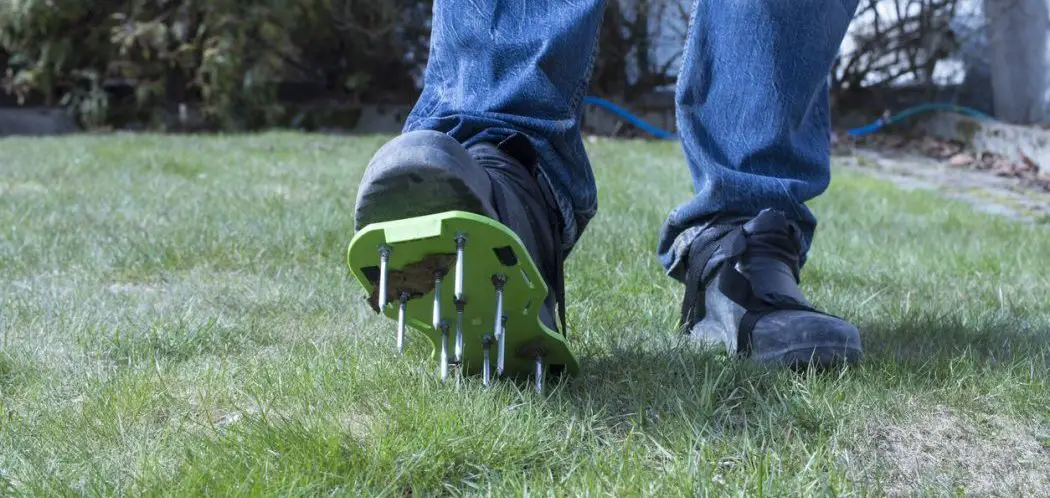If you’re looking to aerate your lawn to relieve compaction, you need to be using an aerator. There are several different types of aerators, some are machine based while some are operated manually.
Aerating is great thing to do for your lawn. It helps to allow more air, fertilizer and water to penetrate deeper into the ground. It works great to alleviate compacted areas and to create vertical channels of unimpeded root growth. Some soils compact more the others, but often times compaction is caused by heavy objects and foot traffic. These areas maybe around clothes lines, entry and exit points onto the lawn. You’ll want to address these areas to keep the grass healthy.
In this article, I’ll be discussing hand aerators, which are the most traditional kind. There are a couple of different types of hand aerators. Some have hollow tines and others have solid tines.
How a hand aerator works
Handheld aerators are quite simple to use. Each model may be slightly the difference but the general in which you use a hand aerator remains the same. You apply pressure by using your foot to cause the forks to penetrate the turf. If you’re using a hollow tine aerator, pulling fork out of the ground removes plugs of soil called cores. This opens the area leaving small holes that can be up to several inches deep depending upon your model.
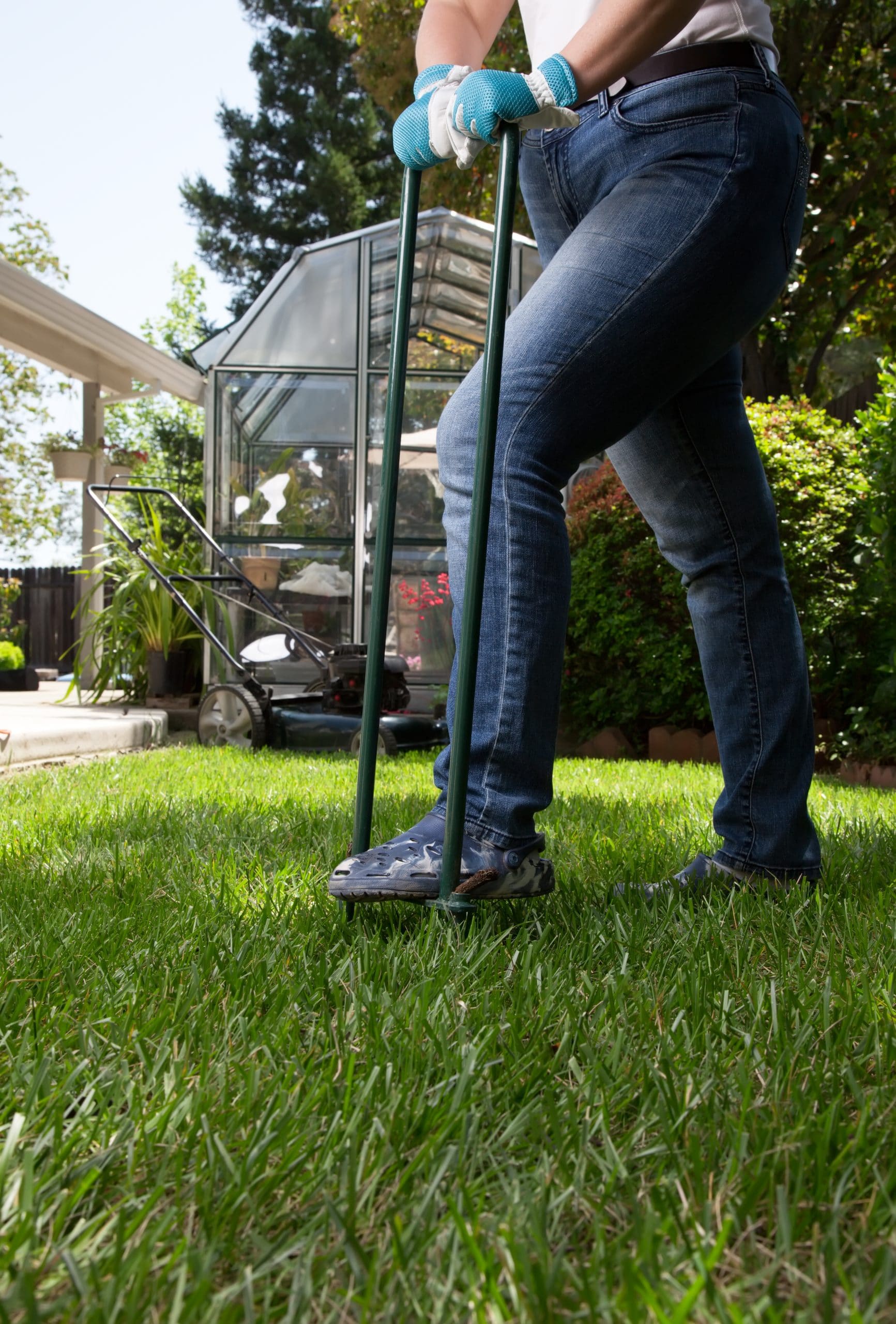
You can either place your foot through the brace and push down or you can push on the top to drive the tines in to the ground. I’ve found both methods to work quite well.
Solid tine aerators tend to be more suitable for sandy soils and less effective for clay-based soils. In some cases, spike aerators may even cause more compaction. You would be much better to go with a hollow tine aerator in this case.
In general, I do prefer hollow tine aerators that leave deep holes in the ground. More air and water can get deeper into the ground this. I find you get much better results with this method too.
If you’ve got problematic areas in your lawn, you can choose to pull out the cores and leave the holes open, or you can fill them in with some organic matter which can help to hold more moisture in the ground.
Why use a handheld aerator?
Hand aerators work best for small areas of your yard. If you have some hot spots where a larger aerator may not be able to get to, it’s good to have a hand aerator at hand to tackle these spots. If you have construction debris under your lawn, or you get certain spots that are consistently dry, a hand aerator can be great here.
I also like to use hand aerators near to paved areas where a large aerator machine can’t get to. For example, if you have stepping stones in your grass, using a hand aerator on the grass in and around these would be an excellent idea.
Sometimes, you can actually get better results using a hand aerator than hiring out some machine. You can be certain you’re going to get a nice consistent pattern in your lawn, and the tines will usually be able to get down further into the ground. Whether this is worth or not, really all depends on the size of your lawn and the amount of time and energy you have.
Manual aerators are excellent for taking soil samples of your grass to send off too! Pulling a core with a and aerator works way better than just digging up some dirt. If you take the lower inch of these plugs, you’ll have an excellent sample.
The hardest part of using a manual aerator is pushing it down into the ground, especially if you do have compaction. The good ones are made of metal and the tines can be sharpened in order to facilitate an easier entry.
What hand aerator is best?
Not all hand aerators are the same and some have certain features which are better than others. Some hand aerators have more of a tubular construction, and size of the cores you pull can vary. Some aerators pull a core with a greater diameter while others pull cores that are greater in length.
I like the Yard Butler lawn coring aerator (link to Amazon).
This has a solid metal construction and robots tines. I prefer one that pulls cores that are 4-5 inches deep. It’s fairly heavy too. The sturdier the better!
If you get a quality aerator, it will be less likely to break and the force you transfer will be efficiently used to penetrate the ground requiring less effort on your behalf. Sometimes it’s easy to hit rocks and other debris in the ground too, so you want to get one that can penetrate well. Getting one with tines that can be removed is a good idea too. That way you can replace those that get damaged.
What about the cores? Should you remove them?
I wouldn’t advise keeping the cores on the lawn. You have a few options of removing them. The obvious option is to sweep them with a lawn sweep. They look terrible when left on your lawn and I don’t see much benefit. The last thing you want to do is to smother your grass with soil.
Some people like to use a rotary mower to churn them up once they have fried. This makes a nice topdressing for your lawn.
Are hand aerators worth it?
After you’ve got the basics of lawn care in your grasp and you can do things like mowing and fertilizing, I would say the next best thing you can do is to aerate your lawn. It can really help to see some great results.
While you can choose to hire or purchase a large gas-powered aerator, these might be overwhelming to someone who is new to lawn care. Larger aerators can be expensive, difficult to use and can be difficult to transport around so if you’re on a budget, you may want to start with a manual aerator.
Hand aerators work best for small areas of grass. They really come in handy for hot spots in your yard where large aerators may not be able to get to. I’ve found a lot of these to be great value for money too. They’re never too expensive and they’re a useful tool to keep at hand.
I find it quite satisfying to use a hand aerator and to remove the plugs! You can pull some beautiful cores that are super long. It’s a great workout even if you’re only using it for a small area of your yard.
The only downside of these is that you’re not going to be able to cover a large area of your lawn without an unrealistic amount of time and effort. I think you’re best to aerate the majority of your lawn with a machine, and then to use a hand aerator on ant hot spots you want to address.
While you can aerate at any time of the year, I would say that its key for your soil to be damp for any aerator to be used effectively. You really need some moisture in the soil to allow a fork to penetrate the soil. If you’ve had a lot of rainfall, you’ll have a significantly easier time than you would if the weather was dry and warm.

